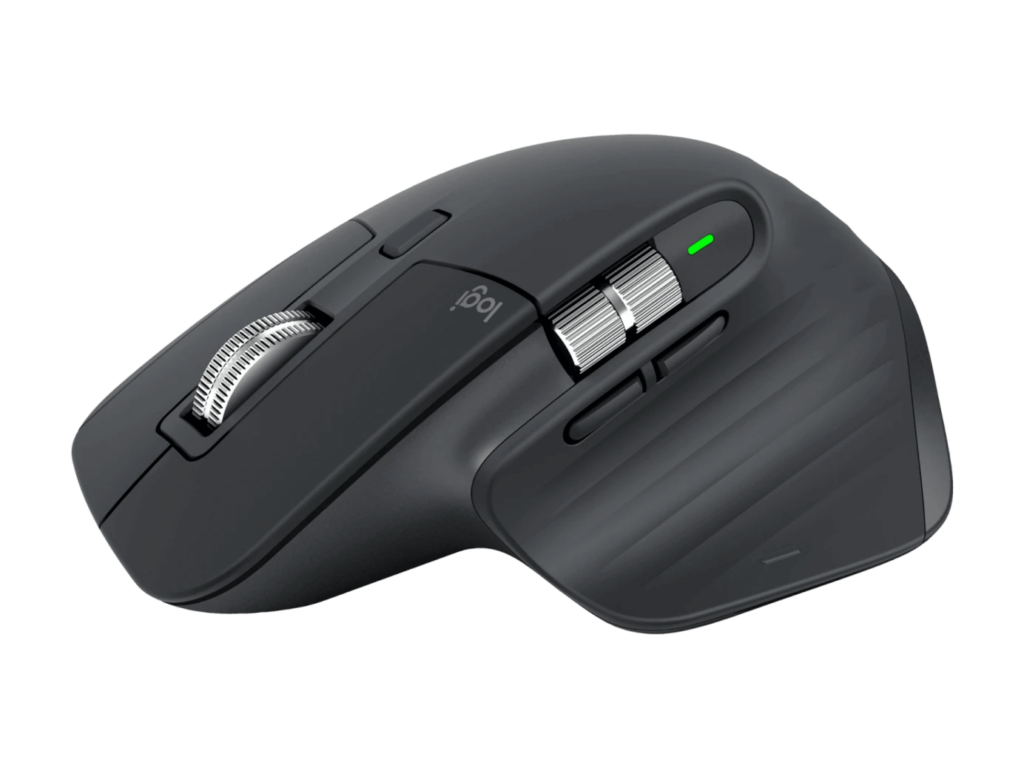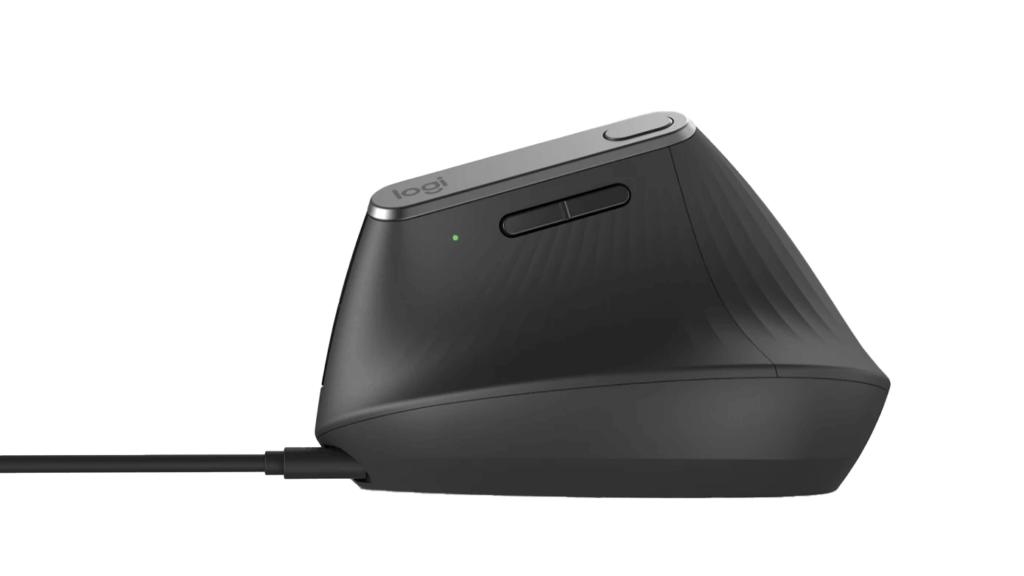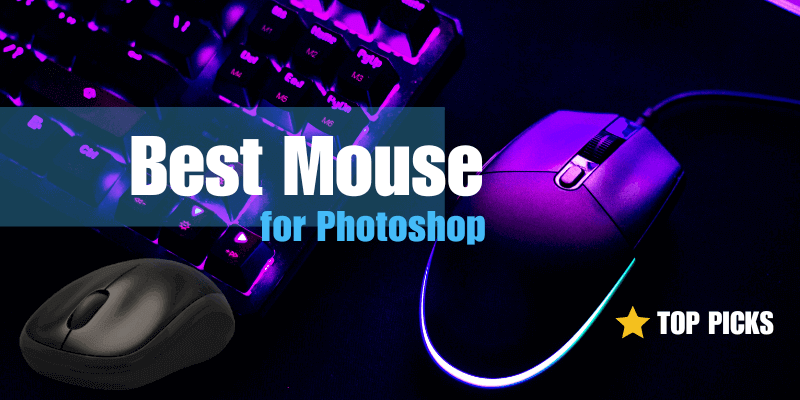As an Amazon Associate, I earn from qualifying purchases.
Many people treat their computer mouse as an afterthought – if they think about it at all – but finding a good mouse can be a transformative experience. Instead of struggling to position your cursor properly and fatiguing your hand in the process, the best mouse will fit naturally in your hand and provide perfect tracking, so you can stop worrying whether your cursor will drift out of position while you’re trying to place a layer or adjust a selection.
My name is Thomas Boldt, and I’ve been using a computer mouse since the days when they relied on a ball for mechanical tracking. The jokes about that got a lot funnier once optical tracking technology became widely available to the general public, which was also around the time that I started using Photoshop.
Since then, my passions for gaming and digital photography have each contributed to an interest in computer hardware. That knowledge also allows me to translate tech jargon into English for those who would rather be focused on actually doing some Photoshop editing instead of wading through different specifications.
In this post, I break down the most important considerations when choosing a mouse specifically for Photoshop, explain which features don’t actually help much in Photoshop, and then select a few of the best mice for Photoshop that you can buy today.
Note: I’m a bit disappointed by the fact that they’re all made by Logitech, so it feels important to mention that Logitech didn’t pay for any of the reviews or have any kind of involvement whatsoever, and I didn’t receive free test models or any other compensation from them.
Table of Contents
Key Takeaways
- Choosing the perfect mouse for your needs will boost your Photoshop productivity and reduce hand strain.
- The best mouse will match your grip style and work surface while providing high-resolution tracking.
- The overall best mouse for Photoshop is the Logitech MX Master 3S, while the best budget mouse is the Logitech G300S.
- If you need relief from hand and wrist strain, the best vertical mouse for Photoshop is the Logitech MX Vertical.
Frequently Asked Questions
Since your mouse is such an important part of working with your computer, many users have questions about how mice work with Photoshop. Here are a few of the most commonly-asked questions about the best mice for Photoshop, but if you have a question that isn’t answered below, let me know in the comments below, and I’ll try to help out.
Should I use a mouse for Photoshop?
For most tasks in Photoshop, you should be using a mouse, with the exception of any big drawing projects. A mouse is perfectly fine for navigating the interface and making small adjustments using short movements, but as soon as you start making large, sweeping gestures, you should probably be using a drawing tablet for that project instead. In an age of cheap hardware, nobody should be drawing in Photoshop using a mouse, so stay tuned for a post about the best drawing tablets!
Is Magic Mouse 2 good for Photoshop?
While the Magic Mouse from Apple is an interesting device that incorporates a touch-based responsive area instead of a mouse wheel, it is not the best choice for Photoshop. It slides nicely across your desk, and it looks sort of nice, but the touch-sensitive area doesn’t offer enough precision for most Photoshop work, and the fact that it only offers a single-click button by default can really slow down your workflow. When you combine those drawbacks with a high purchase price, you’ll see there are much better options available for Photoshop.
What is DPI, and why is it important?
DPI stands for Dots Per Inch, and it indicates the resolution of the mouse’s tracking sensor. DPI is a very bad way of measuring this, but it’s the most common method, so it’s worth explaining. The higher the DPI rating, the faster the mouse is capable of moving. Some mice designed for esports gaming have resolutions above 20,000 DPI, but extreme sensitivity like that provides no benefit for Photoshop work, which doesn’t rely on sharp reflexes or lightning-fast mouse movements (thankfully!).
The Best Mice for Photoshop Reviewed
Now that you know what to look for in a mouse, let’s take a look at some of the best mice available for use in Photoshop. It’s a bit unfortunate that Logitech is dominating the market, but they really do seem to be putting the most effort into mouse design among all the big players. Razer also makes some excellent mice, but their ambidextrous designs still tend to be more expensive than Logitech’s.
Overall Best Mouse for Photoshop: Logitech MX Master 3S

- Max DPI Sensitivity: 8000
- Handedness: Right only
- Tracking System: Darkfield Laser
- Extra Buttons: Two, plus thumb scroll wheel
- Connectivity: Bluetooth or USB wireless
Logitech has finally reached the third iteration of their popular MX Master series, and it’s one of the most popular mice among people who work at a computer all day across a range of industries, not just with Photoshop editors.
The large frame fits nicely into the hand for anyone who appreciates the palm grip style, although users with smaller hands might find that it’s a bit too large. A wide thumb-rest on the left side of the mouse allows you to move the mouse freely and also helps with precision cursor placement.
Above your thumb is the most unique aspect of the MX Master series: a second mouse wheel. By default, it’s set to horizontal scroll in order to complement the primary scroll wheel, but you can customize it for just about anything you want, including Photoshop settings like brush size. There are also a couple of other buttons positioned near the thumb that can be customized using Logitech’s proprietary software.
The tracking system uses Logitech’s Darkfield laser tracking tech, which allows the mouse to be used on almost any surface without a mousepad, including a fancy glass desk – as long as the glass is at least 4mm thick or the tracking may not work perfectly. The system’s DPI ranges from 200-8000, so you’ll be able to find a setting that works for your monitor resolution and personal preferences.
The MX Master connects via Bluetooth or a USB wireless dongle and can maintain connections with up to three different devices that can be swapped using a button on the bottom of the mouse.
Aside from the high price tag, the only minor drawback of the Logitech MX Master 3S is that it is a big mouse, so you can’t just slip it easily into your laptop bag when it’s time to travel. Logitech actually makes a dedicated carrying case for it, which I’ve never seen for another mouse, so it may be better to pair this with a desktop rather than a laptop.
The TLDR Summary: Logitech MX Master 3S is the best mouse available overall, with a good blend of ergonomics and precise tracking.
Best Vertical Mouse for Photoshop: Logitech MX Vertical Mouse

- Max DPI Sensitivity: 4000 DPI
- Handedness: Right only
- Tracking System: Optical
- Extra Buttons: Two
- Connectivity: Bluetooth or USB wireless
The Logitech MX Master 3S has a good ergonomic profile, but if you really want to take your comfort to the next level, you need to explore the world of vertical mice. Rather than using the standard mouse design that requires your wrist to be constantly rotated, a vertical mouse allows you to hold the device using a more natural, handshake-style grip that minimizes fatigue and strain on your hand, wrist, and forearm.
The grip on the MX Vertical uses a 57-degree angle and pairs it with a smoothly textured rubberized surface that should stay comfortable during a long editing session. Tracking is accomplished using an optical sensor with 4000 DPI resolution, which can be adjusted on the fly using a small button on the top of the mouse. There are two customizable buttons next to the thumb which can be adjusted using Logitech’s software.
Connectivity is provided through Bluetooth or USB wireless, and the MX Vertical shares Logitech’s standard ‘three device connectivity’ features so you can swap between work on multiple computers and even mobile devices while using the same mouse.
If the Logitech MX Vertical Mouse doesn’t work for you, the Evoluent Vertical Mouse or the DXT Vertical Mouse may be more to your taste, but they lack the solid build quality, modern components, and design aesthetic found in the Logitech MX Vertical Mouse.
The TLDR Summary: Logitech MX Vertical is the best mouse available for a right-handed Photoshop editor dealing with wrist strain after long days at the computer.
Best Budget Mouse for Photoshop: Logitech G300S

- Max DPI Sensitivity: 2500 DPI
- Handedness: Ambidextrous
- Tracking System: Optical
- Extra Buttons: Six
- Connectivity: Wired USB-A
This affordable wired USB mouse has been around for many years, and it’s a go-to option for many people who want a precise, customizable mouse without spending a lot of money. Thanks to its ambidextrous design, it’s also a great choice for left-handed Photoshop editors.
The optical tracking system has a sensitivity range from 250-2500 DPI, which is more than enough to cover anything you need to do in Photoshop. Multiple customizable buttons are placed at several symmetrically balanced positions around the mouse, although you’ll have to use Logitech’s proprietary software to adjust the button settings.
The RGB lighting might look out of place in an office building, but the G300S is hard to beat when it comes to value for money. You can also disable the RGB system using Logitech’s software if you want to make it a bit less conspicuous.
The TLDR Summary: Logitech G300S is a great mouse for any Photoshop editor working on a tight budget who still wants precise tracking.
How to Choose the Best Mouse for Photoshop
Like any piece of hardware that gets heavy usage, computer mice come in a lot of different variations, and it can be hard to understand the jargon when you’re more interested in Photoshop than polling rates. Here’s what you really need to be on the lookout for when you’re buying a mouse specifically for use with Photoshop!
Grip Structure
If you’re going to be working with your mouse all day, every day, it’s important to have one that fits naturally into your hand. Photoshop editing relies on a lot of mouse work, and it’s all too easy to find yourself with a hand cramp after a long project – and a whole career’s worth of days like that can quickly lead to repetitive strain injuries if you’re not careful.
The best mouse for you will match your preferred mouse grip style, and yes, you probably *do* have a preferred grip style, even if you haven’t realized it.
Many people, especially those with smaller hands, use the palm grip, which rests the full palm against the back of the mouse, with the fingers positioned over the left and right buttons. Gamers often prefer the claw grip, which is similar to a palm grip but with much less contact between the palm and mouse, while people who value speed above everything else tend to use the tip grip, which moves the entire mouse using the fingertips with no palm contact at all.
A more uncommon ergonomic option is the vertical mouse, which uses a very different grip shape from the traditional computer mouse. Instead of requiring that you rotate your hand and wrist to the horizontal to grasp and move the mouse, a vertical mouse is used with a grip that approximates a natural upright ‘handshake’ position. Different vertical mice are available with different rotation angles, so you can find one that really matches your individual natural hand position for maximum relief.
If you’re a left-handed editor who wants to find a mouse specifically designed for a left-handed grip, you’ll quickly find that there are very few options available, although there are more out there than there used to be. A better option is to find a mouse with an ambidextrous design that can be used with either hand, like the budget pick that I’ve selected below.
Tracking Systems
Since we’re long past the days when computer mice used a little rubber ball to detect motion, there are two primary tracking methods used in modern mice: optical tracking and laser tracking.
As you might guess from the names, they’re actually fairly similar: they both illuminate the surface under your mouse and track any changes in the surface pattern using a CMOS sensor, which indicates the direction that the mouse is moving in. Optical tracking systems typically use infrared LEDs to light up your work surface, while a laser tracking system uses a laser for the same job.
Both of these technologies are actually quite old, and over the course of their development, they’ve each had their own relative strengths. There used to be large variations in sensitivity and consistency of movement, but in modern mice, there isn’t too much of a difference anymore except in the type of surfaces that you can use them on, and sometimes a minor variance in price.
Optical tracking systems don’t track well on reflective work surfaces, and many people are forced to use a mousepad to ensure they work properly, although they’re usually a bit cheaper than mice with laser tracking.
Laser tracking systems can track much more effectively across a range of surfaces, but they may experience tracking differentials between low and high-speed motions. Since Photoshop editing doesn’t rely on fast mouse movements, the difference between the two options is minimal.
Sensitivity
While it might be a surprise to some of you, the world of competitive gaming has driven a lot of technological improvements in the sensitivity and precision of computer mice. You can obsess over various resolution, inches-per-second, and polling rate options until the numbers start to lose all meaning, but fortunately, you don’t have to – because beyond a certain level, additional sensitivity doesn’t make a huge difference when it comes to Photoshop.
Many people who recommend computer mice for Photoshop assume that because gaming mice are precise and highly sensitive, they’re ideal for Photoshop, but that’s probably because they don’t actually use Photoshop themselves. Most of the time, it’s actually advantageous to use a lower sensitivity to ensure that you’ve moved your cursor precisely.
Some gaming mice have resolution ranges that reach 25,000 DPI, which means you can move the mouse cursor a long distance very quickly using only a tiny movement of your hand, but that’s only helpful when you’re trying to pull off a 360 no-scope headshot, and it’s not particularly useful when you’re editing photos (or for anything else, really). As long as your mouse has an adjustable sensitivity range, you should be able to find the perfect level for your needs and preferences.
The other popular tech spec found in mice is known as the ‘polling rate,’ which determines how frequently the mouse reports its position to your computer. Once again, though, this spec largely matters for the type of fast-twitch movements that help win matches in certain e-sports games. and doesn’t really matter for Photoshop usage.
Unless you’re considering an Apple Magic Mouse (which I do not recommend), then the best mouse for Photoshop will usually have some extra buttons beyond the standard left/right click and scroll wheel combination.
The most common setup is to add two extra buttons next to the thumb, although some mice include extra buttons on both sides of the mouse or around the scroll wheel.
Some even include a large set of customizable buttons for entering custom commands, which arguably may be useful for Photoshop, although a large macro button area next to your thumb can result in unintended keypresses, so I generally recommend against them for Photoshop purposes (and even for most gamers).
These buttons have to be customized using software provided by the developer since Photoshop won’t recognize any mouse button input signals when assigning new keyboard shortcuts, but this is usually quite easy to do with a quick visit to the manufacturer’s website.
Connectivity
Last but not least, it’s important to choose a mouse that has a good set of connectivity options. The standard wireless options are Bluetooth and 2.4 GHz connections, but there are still quite a few wired mice available too.
Most of the time, the choice between them is simply a matter of convenience, but with many top-end laptop makers starting to reduce the number of available USB ports on their devices, it’s a good idea to make sure that you’ll be able to connect your mouse to your computer.
The best wireless mice often come with the ability to connect to multiple devices at once so that you can quickly switch between your laptop and your desktop or even use a mobile device if you need to.
A Final Word
That covers everything you need to know about the best mice for Photoshop, and hopefully, you won’t be swayed by the promises of high-priced gaming mice that don’t deliver any added value for image editing. Choosing a mouse that fits your hand comfortably is the most important thing to get right so that you can focus on your Photoshop projects and not on your peripherals.
Happy editing!
About Thomas Boldt